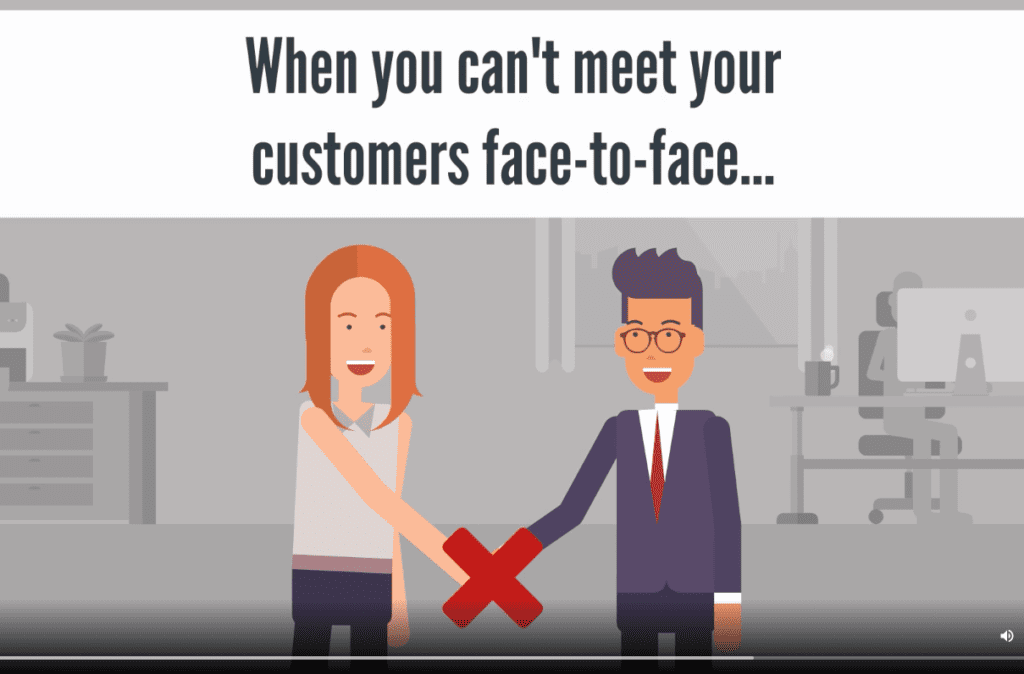Webinar Poll Questions are the single most important feature of online webinar platforms to turn online conversations into sales opportunities and this is why…
With platforms like GoToWebinar, Zoom Video Webinars and Cisco Webex Webinars you can run one or more online Poll and ask your audience questions at any point in the webinar. It means you have an opportunity to listen to you audience not just one, but MANY TIMES during a webinar.
And how does that turn an online presentation into a lead enabling machine? Here’s how. You will need to run three pools.
Leveraging polls is your opportunity to gauge important aspects of your audience such as:
1. Why did they register for your webinar in the first place?
Presumably participants have a problem to solve or an unresolved question you can help them with. This is your chance to find out what it is and qualify if they are a potential business prospect or not.
You could ask an obvious (but useful) question right at the start of your webinar such as:
What motivated you to register for this webinar?
- To solve a problem
- Develop your knowledge of (blah)
- Progress an active project
- Grow your general knowledge
- Something else
Chances are, if your visitors are looking to solve a problem or progress an active project, they’re significantly more likely to have a buying interest than any of the other responses. Anyone that is attending to pick up some general know-how will normally select ‘something else.’
2. Of the topics covered by your webinar, which is the most interesting?
Asking this question, brings some clarity as to the purchasing area of interest your audience cares about within the scope of the content you’re presenting. While poll results are generally anonymous, modern webinar platforms deliver finely grained attendee analysis including responses to polls and surveys.
3. How are you responding to ‘this challenge/problem’ in your business today?
Another useful webinar poll question: What we’re looking for here is a determinant of where the audience is in the buying cycle. You would be looking to offer a series of responses such as:
- Exploring our options
- Formulating our buying choices
- Looking to do something in the next 12-months
- We have an active project
- Not a priority for our business
A response to this question brings some useful signposting of the timeline to a decision—and again, whether the participant is a prospect at all.
Following up webinars with a survey
Yet another useful way to gain feedback is to follow-up every webinar with a survey – but make the survey questions useful. Feedback surveys are (again) a feature built into the better webinar platforms and they’re fantastic because you can ask several questions—with more flexibility in the sort of answer structures (i.e. drop-down, checkbox, multi-choice, free-text etc.).
In addition to any over-arching expectation to learn from you audience so you can improve the quality of your webinars, your tactical ambition from survey questions should be to gain some level of insight in how best to follow-up. What resonated with your audience?
Consider questions like:
1. What was most interesting from the content we presented? (List the content sections)
2. Is this topic one that falls under your area of decision-making responsibility?
3. Did we tell you something you didn’t already know? If so, what was it? (free-text)
4. What was your biggest take-away from the webinar? (Produce a list of pre-canned opportunities and risks—e.g. ‘swimming with sharks is dangerous’) and always include a ‘Something else’ option.
5. How useful was the webinar content in relation to your current projects and priorities?
Final thoughts
Done well, you should be able to embrace polls and surveys in your webinar programs to gather rich insights and profiling on your attendees. From what we’ve covered above, you should be able to ascertain:
- Are they a prospect?
- What is their interest/problem?
- What aspects of ‘the problem’ are creating the biggest undesirables?
- Where are they in their buying journey? What’s their timeline?
- Are they a decision-maker or influencer?
Consider—If you knew all of those insights from a face-to-face meeting, wouldn’t you be pretty happy?
Also consider—If you’re already running webinars, just how well are you doing this today?
To be effective as an enabler for sales, webinars need to be well planned and should be considered one step in an engagement process. Like any sales activity, whatever you’re selling needs to be sold. That means appreciating the job to be done, the problem that needs solving, the current position of the prospect in the buying cycle, the undesirables that need to be resolved, the fit of your solution against alternatives, and identifying the next action commitment should be your ambition for every attendee at every webinar moving forward.
Now Read:

